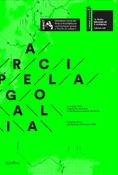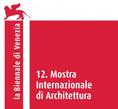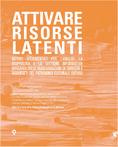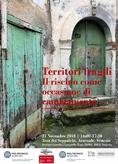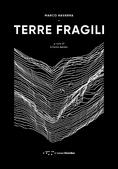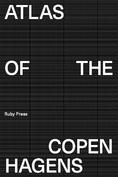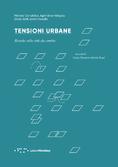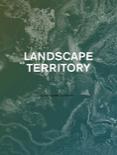urban projects cartography social practices participation sustainability call for papers parks revelation sociology networks creativity local plans premio letteratura urbanistica dottorati events composition sprawl planning infrastructures scenarios premi tesi di dottorato maps newsletter educational inclusive processes
Arcipelago Italia
Projects for the Future
of the Country's interior territories
Padiglione Italia
alla Biennale Architettura 2018
Mario Cucinella (ed)
Arcipelago Italia is the theme of the Italian Pavilion at the Biennale Architettura 2018. It is an idea that shifts architecture’s attention away from the major cities and over to the physical space of our country where, even in the remotest of times, communities are historically expressed in a different relationship between urban dimension and territory.
These territories are spatially and temporally distant from the large urban areas, and they possess an inestimable cultural heritage, so that Italy is identified as an «urban space in the Mediterranean».
The heterogeneous cultural vastness of these territories, reflected in the diversification of their landscape, together with a vast territorial expanse and their distance from essential services, has encouraged us to consider their revival as a strategic theme for Italy as a whole.
Arcipelago Italia is a manifesto whose goal is to indicate possible paths to be undertaken, aimed at bestowing value and importance on architecture.
This catalogue will help visitors get to know our country better. Though the focus is on the most invisible, scarred areas of the country, readers will clearly see that these are also the areas that are the richest in potential and beauty. Italy’s most extensive supply of oxygen, the places where small and large cities were born, crossed by centuries of stories, paths, people, and architecture. We will discover the people and the way they manage spaces, the cultural vivacity and the efforts made by many communities to stay within their own towns.
One last question we shall try to answer: what does the future hold for these territories?
TABLE OF CONTENTS
/ Introduction /
13 | Paolo Baratta, President of La Biennale di Venezia
14 | Federica Galloni, Director General Contemporary Art and Architecture
and the Urban Peripheries Commissioner of the Italian Pavilion
15 | Arcipelago Italia.
Projects for the future of the Country’s interior territories
Mario Cucinella
15 | Premise
16 | Architecture as a tool to revive the territories
16 | Five projects for the Country
17 | Listening, participation, involvement
18 | Giancarlo De Carlo
18 | Installation
19 | In the words of the experts
19 | The future of Italy: the Italy of Towns
Veronica Nicotra
20 | Arcipelago Italia: the margin that becomes the center
Aldo Bonomi
21 | Return to the future
Fabio Renzi
22 | GDC
Anna Vermiglia De Carlo
/ Itineraries /
27 | The journey
28 | Overview of the itineraries
31 | Western Alps. Itinerary 1
32 | Introduction
35 | Summary of sites
40 | Colletta di Castelbianco. The Borgo Telematico
42 | Rittana. Regeneration of the Village of Paraloup
45 | De Carlo and history
Monica Mazzolani
47 | Eastern Alps. Itinerary 2
48 | Introduction
51 | Summary of sites
60 | Molveno. Work to identify, examine and renew the waters
62 | Borca di Cadore. Progettoborca
65 | Culture, heritage, value
Ezio Micelli
67 | Northern Apennines. Itinerary 3
68 | Introduction
71 | Summary of sites
78 | Correggio. The Covered Garden
80 | Poppi. Borgo d’Italia
83 | The woodlands and the challenges for a revival of Italy’s interior territories
Edoardo Zanchini
85 | Central Apennines. Itinerary 4
86 | Introduction
89 | Summary of sites
96 | Urbino and Ca’ Romanino
98 | Urbania. Casa Nera
101 | Microcities revisited
Francesco Ceccarelli
103 | Samnite, Campanian, Lucanian Apennines. Itinerary 5
104 | Introduction
107 | Summary of sites
112 | San Leucio. 18th Century Ideal City
114 | Cairano. Organic Hamlet. Integrated regenerations
117 | Soft hypothesis for a rebirth
Luigi Prestinenza Puglisi
119 | Daunia, Alta Murgia and Salento Sub-Apennines. Itinerary 6
120 | Introduction
123 | Summary of sites
128 | Venosa. Borgo d’Italia
130 | Cursi. Villaggio Cavatrulli
133 | The metamorphosis of spaces: culture as a driver
Roberta Franceschinelli
135 | Calabrian-Sicilian Apennines. Itinerary 7
136 | Introduction
139 | Summary of sites
144 | Rosarno. FaRo — Fabbrica dei Saperi
146 | Noto. Piazza Porta Reale
149 | A platform for change. Farm and Favara. Past, present, and future
Andrea Bartoli
153 | Sardinia. Itinerary 8
154 | Introduction
157 | Summary of sites
162 | Orgosolo
164 | Dorgali. Framing the landscape. Bus stop cantilever
167 | The island of silence
Mario Abis
/ Workshops /
171 | Five projects for the Country
171 | The Collective experimental projects
171 | The hybrid building
172 | A journey to take together
Massimo Alvisi
172 | The participatory process
Ascolto Attivo srl
173 | Creando Pensamus.
The necessary alliance between university and territory
Maurizio Carta
174 | Photography as a tool for the project
Urban Reports
175 | Landscape first
Andreas Kipar
176 | A ‘Piazza del sapere’ for the interior territories
Antonella Agnoli
179 | Off-cells. A work-place for the Casentinesi Forests
180 | The strategic area
182 | The use of sustainable wood in the local economy
Antonio Brunori
184 | Participation
Agnese Bertello
186 | Intervention strategy
193 | Project
195 | A diptych for Camerino.
Reconnecting community through culture in the Crater area
196 | The strategic area
198 | The gordian knot of the earthquake
Manuel Orazi
200 | Participation
Agnese Bertello
202 | Intervention strategy
207 | Project
211 | Basento workshop.
Two healing sites for the Materana Hillside
212 | The strategic area
214 | The complex system of connections
Federico Parolotto and Francesca Arcuri
216 | Participation
Agnese Bertello
218 | Intervention strategy
225 | Project — Ferrandina station
227 | Project — Grassano station
229 | Cultivating the future.
A piazza for the growth of the Belice
230 | The strategic area
232 | Rural innovation:
the areas of the interior as new centers for the creation of meaning
Alex Giordano
234 | Participation
Stefania Lattuille
236 | Intervention strategy
243 | Project
245 | The citizens’ house. A place for care in the Barbagia
246 | The strategic area
248 | A new model of health
Enzo Rizzato
250 | Participation
Marianella Sclavi
252 | Intervention strategy
259 | Project
⁄ Future ⁄
262 | The future to be built
Luca De Biase
264 | Climate: a portrait of the future archipelago
Antonio Navarra
266 | Arcipelago Italia: sustainable choices toward a new mobility
Federico Parolotto and Francesca Arcuri
⁄ Conclusions ⁄
273 | A short glossary of terms to unleash the potential
of Italy’s interior territories
Notes by Fabrizio Barca, Sabrina Lucatelli, Daniela Luisi
and Filippo Tantillo
274 | Postscript
Mario Cucinella
277 | Credits for MiBACT
277 | Credits for the Italian Pavilion
278 | Credits Call for Arcipelago Italia
283 | Credits for the Collective
284 | Acknowledgments
ABOUT THE EDITOR & CURATOR
Mario Cuccinella is an Italian architect, founder of Mario Cuccinella Architects - MCA amongst the most important architects practicing in Europe today with multiple award-winning international design projects. The impact and significance of his work – both environmental and social – as an architect, educator and in service have been recognized world-wide and most recently with Honorary Fellowship by the American Institute of Architects (2017) and by the Royal Institute of British Architects (RIBA) who bestowed upon him their prestigious International Fellowship (2016).
ARCIPELAGO ITALIA
Italian Pavillion | Venice Architecture Biennale 2018
May 26th - November 25th 2018
Arsenale, Venice
Related articles:
- La Biennale di Venezia 13th International Architecture Exhibition Common Ground PLANUM VIRTUAL TOUR
-
ATTIVARE RISORSE LATENTI
Metodi sperimentali per l'analisi,
la mappatura e la gestione informativa integrata delle trasformazioni
di territori e manufatti del patrimonio culturale diffuso -
Biennale Sessions 2018
TERRITORI FRAGILI
Il rischio come occasione di cambiamento -
Terre Fragili
Architettura e catastrofe - Atlas of the Copenhagens
-
Tensioni urbane
Ricerche sulla città che cambia -
Landscape as Territory
A Cartographic Design Project




Planum
The Journal of Urbanism
ISSN 1723-0993
owned by
Istituto Nazionale di Urbanistica
published by
Planum Association
ISSN 1723-0993 | Registered at Court of Rome 4/12/2001, num. 514/2001
Web site realized by ChannelWeb & Planum Association | Powered by BEdita 3
